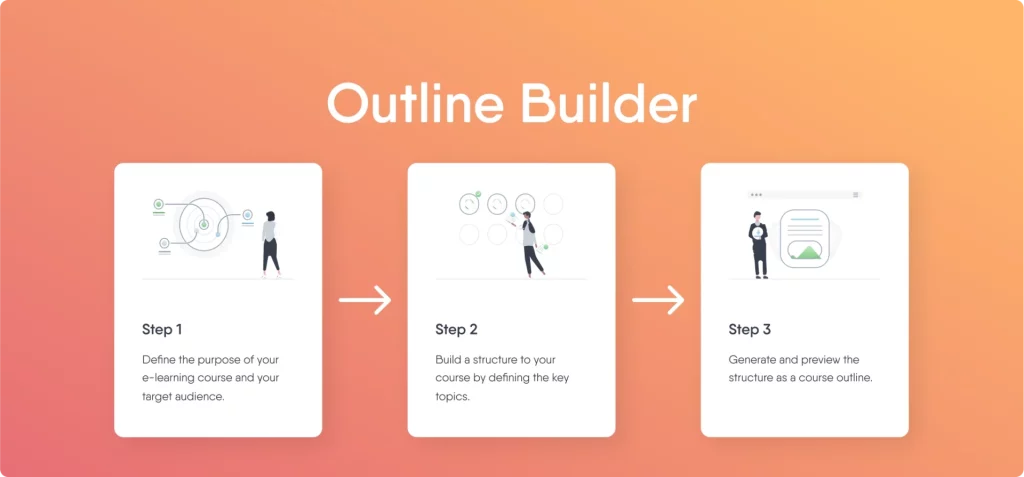Maximize your asynchronous learning strategy: 8 tips for success
Asynchronous learning comes with many benefits for both learners and trainers, including flexible scheduling, and the ability to work from home. But from a teaching perspective, how do you go develop an asynchronous learning strategy that effectively engages participants? That’s what we’ll cover today. By the end of this article, you’ll be equipped with eight tips to set your asynchronous teaching strategy up for success.

What is asynchronous learning?
Let’s begin with the definition for asynchronous: objects or events that do not occur at the same time.
A learning experience that’s online, can happen at any time, and centers around the unique needs of the learner, is commonly known as asynchronous learning. As a result, learners using asynchronous learning formats typically rely on digital learning materials that can be accessed anytime.
The main component of asynchronous learning is the flexibility it offers. Learners can set their learning schedules according to their own priorities and pace. They can enhance their learning experience with a wide range of digital content — like videos, online courses, and podcasts — and interact through a variety of mediums — like email, discussion boards, and chat.
Asynchronous vs synchronous learning
To further understanding what asynchronous learning means, we can take a look at the definition of synchronous learning. Essentially, with synchronous learning, everything happens live and in the moment. Synchronous learning can take place in digital or in-person settings. Learn more about the differences between asynchronous and synchronous learning in our article.
There are a number of benefits of synchronous learning. However, it’s safe to say asynchronous learning has perhaps become the most popular learning format as more companies offer remote or hybrid working schemes, most organizations have opted for online asynchronous training to connect with their employees at home.
Let’s learn a few tips for developing an online asynchronous teaching strategy within an organization.
Empower internal experts to create
Have you heard of Employee-generated Learning? If not, this is your sign to get started. Watch our free webinar to discover how Nielsen successfully started and you can too.
Asynchronous learning tips: develop your strategy
Here are eight tips to optimize your asynchronous learning strategy:
-
Create short courses
This is the first and basic step to capture organizational knowledge in a meaningful way. Look for easy authoring tools that allow you to quickly create and publish asynchronous e-learning courses. Set clear objectives and create relevant content to give learners a clear idea about what is expected of them.
-
Include videos
Short videos engage learners more than visual text. You can include relevant Ted Talks, educational YouTube videos, or even create your own videos to engage your learners. Learners are more likely to retain information when visually engaged by videos than they would with other types of media.
-
Add interactive features
Similarly, including interactive elements also helps keep learners engaged with the subject. Unlike static content and textbook materials, learners are more likely to engage when they’re invited to interact with their lesson. You can use audio-visual content, simulated assessments, and even invite your learners to participate in real-time scenarios to illustrate a concept. You can also engage your learners in games and reality-based use cases that get learners to practice their new skills.
-
Set up discussion boards and forums
Encourage learners to post their learning experiences, questions, and views on discussion boards. These boards are a great way to connect people. They can also be used to facilitate shared assignments like group discussions, which learners can participate in at their convenience. Learners can also use online forums to post their questions and get responses from fellow learners or an instructor.
-
Provide feedback
While it’s not always possible to give immediate feedback in an asynchronous learning setup, make sure your learners can still easily get feedback on their progress. You can facilitate feedback through assessments or assignments. You could also set up a feedback channel where you can easily manage, read and understand learners’ concerns. Learn more about how to give useful feedback to your learners. Though asynchronous learning is not instructor-based, having a trainer to guide your learners’ experience can be useful.
-
Communicate via email
Speaking of feedback, email can be an effective tool for engaging with learners — among other communication needs. Ensure you respond to your learners’ messages promptly. You can do this by setting aside time on your calendar to engage with and respond to your learners’ queries.
-
Create a blog
Blogs are also a very effective medium for learners to reach out with questions and take note of any key updates to your learning content. They also offer a good support structure for learners can engage with each other and exchange perspectives.
-
Provide additional resources
Including curated links within courses to additional, existing resources allows learners to go beyond their assigned learning content and pursue the subject further according to their interests. You can place links to webinars, videos, or podcasts for your learners to explore on their own.
Creating an asynchronous learning strategy is not simply about meeting the definition but also about creating an interesting and engaging learning environment. Not only will this satisfy your learners, but it also serves as a major leap for organizations to be able to meet their learners’ needs under any circumstances.


